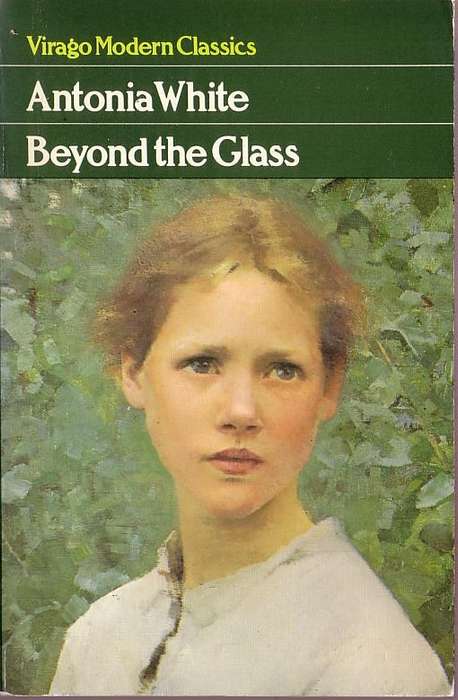Virago modern classics, 1979, softcover, 285 pages, condition: good.
Clara Batchelor is twenty-two. Her brief, doomed marriage to Archie over, she returns to live with her parents in the home of her childhood. She hopes for comfort but the devoutly Catholic household confines her and forms a dangerous glass wall of guilt and repression between Clara and the outside world. Clara both longs for and fears what lies beyond, and when she escapes into an exhilarating and passionate love affair her fragile identity cracks.
Beyond the Glass completes the trilogy sequel to Frost in May, which began with The Lost Traveller and The Sugar House. Although each is a complete novel in itself, together they form a brilliant portrait of a young girl's journey to adulthood.
Antonia White was born as Eirine Botting to parents Cecil and Christine Botting in 1899. She later took her mother's maiden name, White.
In 1921 she was married to the first of her three husbands. The marriage was annulled only 2 years later, and reportedly was never consummated. She immediately fell in love again with a man named Robert, who was an officer in the Scots Guards. They never married, and their relationship was brief but intense, which led to her experiencing a severe mental breakdown. She was committed to Bethlem, a public asylum, where she spent the next year of her life. She described her breakdown as a period of mania. After she left hospital, she spent four years participating in Freudian studies. She struggled the rest of her life with mental illness which she referred to as The Beast.
Her second marriage was to a man named Eric Earnshaw Smith, but this marriage ended in divorce. By the age of 30, she had been married 3 times. During her second marriage, she had fallen in love with two men. One was Rudolph 'Silas' Glossop. The other was a man named Tom Hopkinson, a copywriter and S.G. who is described as a tall handsome young man with a slightly melancholy charm. She had trouble deciding whom she should marry following her divorce, and she married Hopkinson in 1930. She had two daughters, Lyndall Hopkinson and Susan Chitty, who have both written autobiographical books about their difficult relationship with their mother.
Her career as a writer seems to have been driven by the desire to cope with a sense of failure, resulting initially from her first attempt at writing, and with mental illness. She was quoted as saying, The old terrors always return and often, with them, a feeling of such paralyzing lack of self-confidence that I have to take earlier books of mine off their shelf just to prove to myself that I actually wrote them and they were actually printed, bound, and read. I find that numbers of writers experience these same miseries over their work and do not, as is so often supposed, enjoy the process. "Creative joy" is something I haven't felt since I was fourteen and don't expect to feel again."
With regard to the content of her writing, White remarked, My novels and short stories are mainly about ordinary people who become involved in rather extraordinary situations. I do not mean in sensational adventures but in rather odd and difficult personal relationships largely due to their family background and their incomplete understanding of their own natures. I use both Catholic and non-Catholic characters and am particularly interested in the conflicts that arise between them and in the influences they have on each other.

